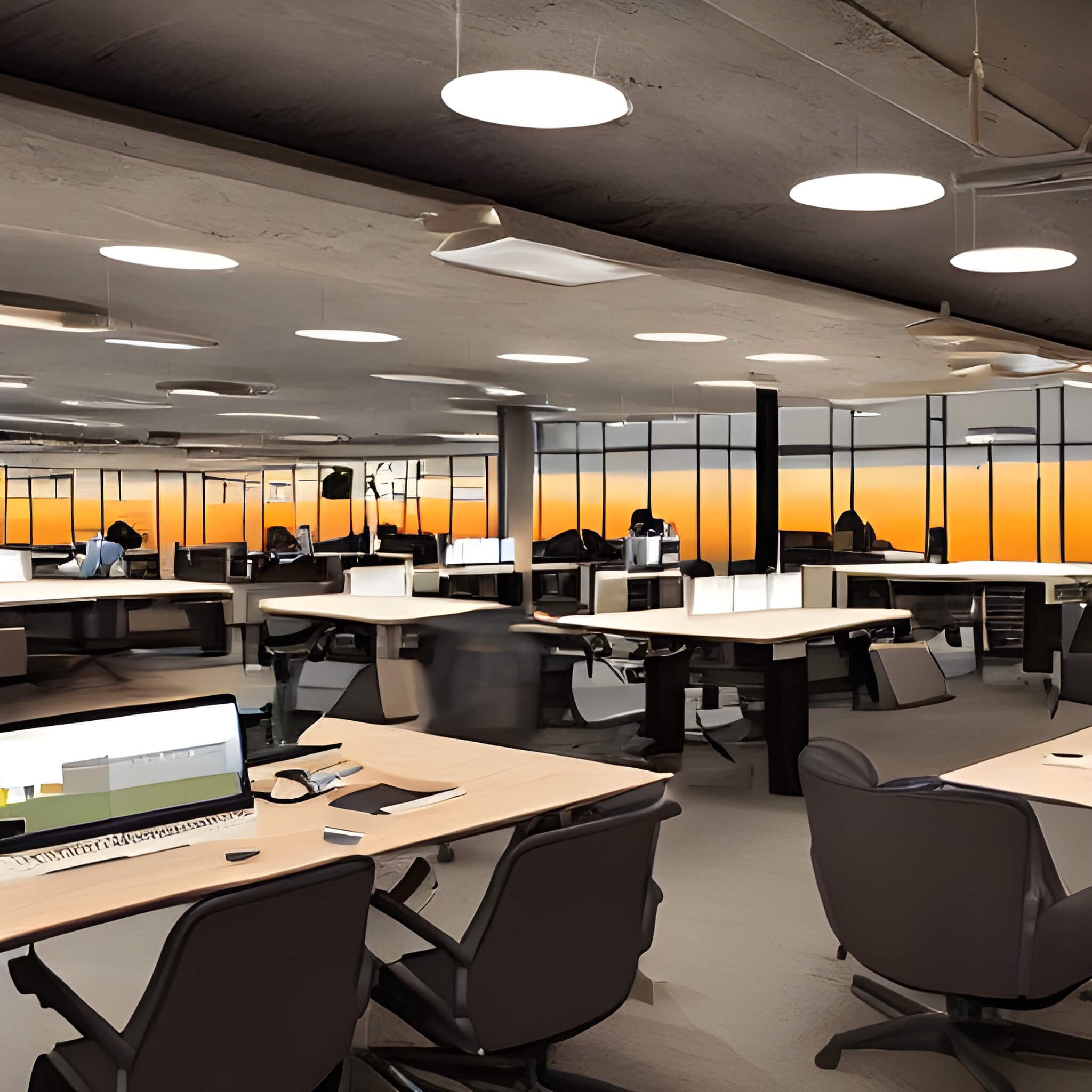Keys to Transforming Workspaces for Enhanced Productivity and Cost Efficiency
The era of inflexible cubicles and monotonous schedules is fading. As a result, organizations are moving forward to embrace a progressive stance on workplace design that prioritizes productivity and efficiency. In the present day, businesses have started to focus on employee well-being and cost-effectiveness more. It is undeniably a paradigm shift that is driven by a profound realization: a comfortable workplace should not only be productive but also financially advantageous.

What Constitutes an Intuitive Workspace?
Intuitive workspaces are a carefully planned environment that effortlessly incorporates technology, furniture, and layout to suit the specific needs and working styles of a particular team. It could be said that it is a setting that fosters collaboration and intensifies focus, all while minimizing distractions and inefficiencies, resulting in enhanced productivity and creativity.
Now, the question arises: How can organizations tap into the potential of their intuitive workspaces? Let’s explore the crucial areas that, when strategically addressed, have the power to transform any environment into a thriving hub of success:
● Design and Layout: Embrace Flexibility and Focus
The era of designated desks and unchanging layouts is waning. Embrace a dynamic workspace that accommodates the varied needs of a team. Implement activity-based working, allowing employees to select their environment based on their tasks. Imagine collaborative hubs for brainstorming sessions, serene corners for focused work, and cozy lounges for interactions. It brings flexibility, which leads to ensuring creativity, and empowers employees to work in a manner that suits them best.
● Technology Integration: Tools for Efficiency and Collaboration
Technology has shifted from being an accessory to becoming a fundamental component of the workspace in the present digital world. In the modern era, organizations have started utilizing cloud-based platforms for real-time updates and seamless information sharing.
This is the way they have become successful in overcoming geographical limitations and fostering teamwork. Embrace video conferencing solutions to streamline remote collaboration, ultimately reducing travel costs and expanding the organization’s talent pool.
Automation is the key to unlocking its potential. The software can handle repetitive tasks, liberating valuable time for teams to focus on critical thinking and innovation. Additionally, prioritize mobility to ensure Wi-Fi coverage across the entire workspace and provide equipment that enables employees to work productively on the go.
● Mobility Matters: Untethering Work and Unleashing Potential
It is important to extend the scope beyond conventional office confines and empower the team to work from any location, at any time. Contemporary workers should not restrict themselves to desk work. Instead, guarantee comprehensive Wi-Fi coverage across the workspace and furnish equipment that facilitates remote flexibility. Furthermore, organizations should concentrate on using laptops, tablets, etc., to ensure productivity.
● Build Healthy Workspaces for Enhanced Productivity
For enhanced workforce productivity, organizations should focus on fostering a joyful and healthy work environment. Give priority to ergonomics by providing adjustable furniture that promotes proper posture and prevents musculoskeletal issues. Integrate biophilic design elements, such as natural light, and natural materials, to establish a stress-reducing environment that leads to a cognitive function. Businesses should balance this with smart technology – automated temperature control, energy-efficient appliances, and occupancy sensors – to ensure cost-efficiency and sustainability.
Make the physical and mental health of the team a priority and explore options like providing access to fitness facilities or wellness programs.
● Cultivate a Culture of Connection
An intuitive workplace is more than just a workplace, as it serves as a community hub. It has the capability to cultivate a culture of interaction by incorporating designated social spaces and organizing frequent team-building activities, which can even include in-office games. These interactions may help in building personal connections that lead to improved communication and collaboration among the employees, ultimately propelling productivity.
● Efficiency Meets Sustainability Through Cost-Conscious Transformation
Analyze data and identify underutilized areas to optimize the workplaces. Businesses should consider flexible furniture solutions and movable walls to trailer the space to changing needs, maximizing every square foot.
In our world that’s increasingly mindful of the environment, it’s not just a good thought but a must to embrace sustainable practices. Organizations need to emphasize putting support behind energy-efficient lighting, HVAC systems, and most importantly appliances. Implement motion sensors and occupancy controls to conserve energy in unused areas. Businesses should promote recycling, use eco-friendly materials, and implement water conservation measures. All these initiatives can benefit the work environment and impact a brand image positively.
● Transforming from Within
Remember, the most transformative power lies not in the physical space itself, but in the culture cultivated within it. Foster a culture of open communication and feedback, encouraging employees to voice their needs and concerns regarding the workspace. Be open to suggestions and implement changes that contribute to overall well-being and satisfaction. This fosters a sense of ownership and belonging, further boosting engagement and productivity.
The Future of Work
It is all about thriving ecosystems that empower individuals, foster collaboration, and drive innovation. Any organization can transform its workspaces into a powerful engine for productivity, and cost-efficiency, which leads to the ultimate success. They can do so by embracing the principles of technology integration, employee well-being, and sustainability.
There is an additional approach to measure the impact of the workspace changes based on some crucial metrics like employee satisfaction, employee productivity, and energy consumption. Data-driven decisions will ensure one’s transformation journey continues to optimize their intuitive workspace for both people and profits.
Transforming a workspace is an ongoing journey. So, the key here is to listen to employees, experiment with different layouts, and embrace technology as an ally. By implementing these key principles, anyone can unlock a workspace that thrives on synergy, fuels innovation, and propels the organization toward sustainable success.
